Episode 199
What you’ll learn in this episode:
- What makes jewelry so difficult to photograph, and Kim’s tips for capturing jewelry in photos
- What techniques Kim uses to make gemstones look shiny, sparkly and colorful
- Which tools and tips photographers need to get started with jewelry photography
- Common jewelry photography mistakes and how to avoid them
- How to choose the right jewelry photographer
About Kim Nunneley:
Kim Nunneley is a Los Angeles-based IATSE Local 600 photographer specializing in unit photography, gallery, lifestyle and portraiture. She has held various roles, from photographer at a fashion merchandising company to photo assistant, and she has worked at one of the world’s most prestigious photo studios in NYC. She has developed a niche as a jewelry photographer working for major jewelry companies.
Additional Resources:
Photos:
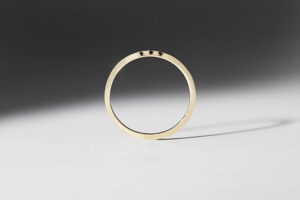
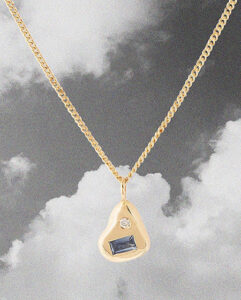
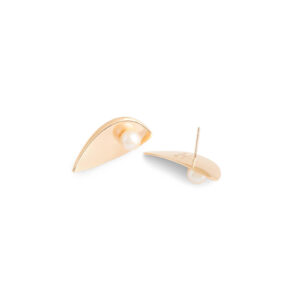
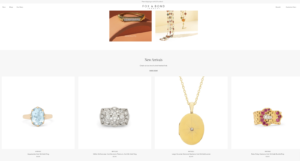
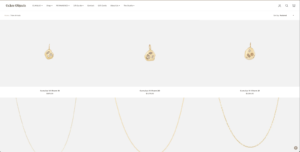
Transcript:
A simple photo can never quite capture the real-life beauty of a diamond, ruby or sapphire. That’s why photographer Kim Nunneley relies on a variety of tools, software and experience to make jewelry photographs that shine. She joined the Jewelry Journey Podcast to talk about the mistakes she made when she first started photographing jewelry; her tips for burgeoning jewelry photographers; and what questions jewelry brands should ask to choose the right photographer. Read the episode transcript here.
Sharon: Hello, everyone. Welcome to the Jewelry Journey Podcast. This is the second part of a two-part episode. If you haven’t heard part one, please head to TheJewelryJourney.com.
My guest today is Kim Nunneley of Kim Alexis Photography. She is a photographer who specializes in jewelry. She’ll tell us some of the tricks we should know to take a nice photo. Welcome back.
Does the stone matter? Is it easier to photograph some stones than others, like a ruby as opposed to a sapphire?
Kim: What’s actually more important is the age and condition the stones are in, more so than the color. It’s more so the cut and condition. I have one client who specializes in antique and vintage jewelry. A lot of the pieces are very old, and they’re not as easy to photograph as the jewelry from my other client who makes her own stuff. It’s all sparkly, brand-new pieces, and they’re so much easier to photograph. The diamonds are easier to photograph. The gold is easier to photograph. With these antique pieces, they’re much more complicated because we have to make these stones that are 100 years old or more look sparkly and shiny and beautiful. A lot of times you’ll see—what is it called, an incision? Is that the word for these stones? Is that what it is, incisions in the stones?
Sharon: I don’t know.
Kim: Like a cut on the inside.
Sharon: Yeah.
Kim: Yeah, some of these old stones have that. I think it’s more crucial in learning how to photograph those older conditions.
Sharon: Because antique jewelry is so popular today, what advice would you give somebody who has been handed a 100-year-old ring?
Kim: I would say practice on newer pieces to learn how light reflects and how it hits. Once you know that, you’ll be able to adjust your lighting for these older pieces. You’ll know what to do with those situations if you have already photographed newer pieces. I would say start off with newer pieces to sharpen your skills.
Sharon: What if somebody hands you a diamond and says, “I want to show that this is a diamond of a certain cut, an old one versus a new piece”? Can you do that with photography?
Kim: Yeah, you absolutely can. Like I said, sometimes we just can’t get it as sparkly as a new diamond. Even with lighting and Photoshopping, it will never look the same, but there are tools you can use. That’s also important; it doesn’t necessarily have to look as sparkly or new because it’s not. It’s not a new one and there’s beauty in that. There’s a perfect example of a rose cut. I love a rose cut diamond, but they are so difficult to photograph, especially the older ones.
Sharon: What do you do if you are feeling frustrated by a rose cut diamond? Do you just go with it?
Kim: These photoshoots are always done with my clients present, so we will change. We’ll modify the lighting. We’ll try different setups. We will incorporate different techniques, like using a fill card or a white bounce card or a little black card, or a piece of silver or gold cardboard to shine light on it. I have all these different tools we will use and attempt. We’ll try to do the best we can, and at the end we say, “That’s the best we’re going to get it.” The clients are happy. We get something that is an accurate representation of the piece.
Sharon: It’s interesting that you have clients present. Usually, a client will look after the photograph is done. They’ll look at the images on a lightbox, but they’re present for the photography.
Kim: I have very hands-on clients. I have a couple of clients who are a little more hands-off. Like you say, I deliver the images. I do my magic and I deliver images afterwards, but I do have some clients that are very hands-on. They want to be present, and it’s important for them to be there while I’m shooting. We’ll adjust things. We’ll make adjustments. This is more so with the higher-end pieces and the antique pieces. They’re very particular and want it to look as accurate as possible.
Sharon: Have you ever had a client reject everything you’ve done, all the images, and say, “Start again”?
Kim: No, that would be a nightmare. Thankfully, no, that’s never happened. I would say by the time you have clients, you want to have enough experience where that doesn’t happen. But yeah, thankfully no. Maybe once in five years, there’s been like two pieces we had to reshoot, but that’s all.
Sharon: Does the size of the piece of jewelry matter, if you’re given a ring with a big stone?
Kim: I prefer bigger jewelry, actually, funny enough. One of my clients makes very dainty, little pieces, very thin pieces. They’re beautiful, but they are so difficult to photograph because they are so tiny. I like photographing bigger pieces. I’m trying to think why it’s easier for me personally. I think it’s because these bigger pieces are typically less—well, it depends; sometimes they can be really reflective. I think what’s more difficult is high-polish pieces, the really glossy, high-polish jewelry because you see everything. They reflect everything, as opposed to the gold in an older piece that’s more matte. I don’t know if that’s the appropriate term, but it’s not as shiny. That’s a lot easier to photograph because we can get clean gold or silver or whatever it is. We can get it really clean looking. But I love photographing big, chunky pieces; that’s my favorite.
Sharon: When you say big and chunky, that’s relative. Do you mean a big piece, or do you mean bigger than the norm? What do you mean by that?
Kim: I guess bigger than the norm. Yeah, you’re right; it is relative. Bigger than the norm. It wouldn’t be your everyday jewelry. It would be for an event or a cocktail ring or a red-carpet piece. I love photographing that kind of stuff; it’s really fun for me. I also like a challenge sometimes.
Sharon: That’s interesting. So, a stylist might give you several pieces and say, “Gwyneth Paltrow is going to be wearing this.”
Kim: Yeah, exactly. I might get something like that to photograph. I think it’s always fun seeing a piece that I photographed published in a magazine. Maybe an actor is wearing it on the red carpet or my photography is published in magazines. It’s nice to see that. At times, it will be published. It’s always nice to see my work and have it be kind of tangible.
Sharon: Because of the difficulty—and it does sound very difficult—do you charge more for jewelry photography?
Kim: Yes, it is very tedious; it is very difficult. It is a learned skillset. So yes, jewelry photography is not cheap. It’s also because you’re paying for their years of experience. They’re not going to waste your time trying to shoot this ruby or diamond. It’s like, “No, I know how to shoot that. We do this,” and it’s done in three to five minutes, onto the next piece. There’s that aspect of it, and it’s so tedious with the focus stacking. You have to have a lot of patience for photographing jewelry. It’s very, very tedious. That’s another reason why it is a little pricier than other types of photography, as opposed to a family portrait or something.
Sharon: It sounds very difficult, so I should expect to pay more. Are people taken aback by the price?
Kim: No, they’re not. The ones that are taken aback are the newer companies that are just starting out, or maybe it’s a passion project for them, a more personal project, and they just want photography. Larger companies know what the pricing is like. There’s a standard rate, roughly, so it’s not too surprising.
Sharon: I’m surprised from leafing through a magazine, they say, “Nails by somebody,” and I’m going, “Who?”
Kim: I know; it’s so funny. There is a specialty for everything. It’s so funny.
Sharon: Is there a specialty for jewelry photography? Is somebody who calls and says, “Oh, you have to have Kim. She knows everything about jewelry”? How do you get your work if you’re not on staff?
Kim: That’s a good question. Word of mouth is a huge part of it. I do a little bit of advertising and email reach-out, just pitching myself. It’s a combination of all that.
Sharon: If I’m trying to decide between jewelry photographer A and B, what should I ask?
Kim: I would ask if they’ve had experience with whatever you specialize in. Maybe it’s antiques or tiny, intricate, precious little pieces. Whatever that specialty is, I would ask if that photographer has experience photographing that. Obviously, I want to see a portfolio. Also, if they’re open to it, I’ll do a test shoot with maybe three pieces, like a trial day. You just give them a free trial. I’ve had clients do that, where we do a trial day to see not only if they’re happy with the images, but if you enjoy working with each other. I think that’s important as well.
Sharon: I don’t know how you are, but I presume I would take tear sheets if there are publications with their jewelry. Is that what you would show to say, “I know how to do antique stuff”?
Kim: Yes, in my portfolio, I do have tear sheets in there as well. I have a mixture of tear sheets and product shots because I think that’s important. Like you mentioned, it provides credibility and shows you’ve accomplished it.
Sharon: How long do you think it took you to feel confident that you could take nice pictures of jewelry?
Kim: Oh gosh, I don’t know. I’m going to say about four years ago. I think that’s when I started to feel that I’m really becoming an expert at this and confident in my skillset.
Sharon: So, it took you about five years to feel confident, and that was four years ago? I’m trying to understand this.
Kim: I’ve been doing jewelry photography for about eight years now. I was doing a good job, but I was acquiring different clients as well during that time. Maybe the first two years I had one client, and it grew from there. As I kept shooting, you keep learning these different techniques. A lot of it is learning on the job. Even today, there are some pieces that surprise me, where I wouldn’t have thought to use a certain lighting technique.
Sharon: What did you do during Covid? Did people stop sending you jewelry?
Kim: Funny enough, during Covid—and thank goodness for technology—a few of my clients decided to do Zoom photoshoots. They would either send me the pieces or I’d go pick them up. I’d set up my whole station, and it’s called shooting tethered. I basically connected my camera to my computer, and as I’m photographing, I have images pop onto the screen. I share my screen and my clients can see the images coming in live. So, they might say, “Hold on, that looks a little crooked,” and I have to tick it. “The diamond’s not shiny.” “Can you get that more blue?” They would do that. We switched to that, which was so helpful. It felt like quite a few photographers and companies started doing that.
Sharon: That’s interesting. I have a friend who’s a makeup artist, and she basically stopped working during Covid. Nobody called her. She couldn’t be blowing into somebody’s face.
Kim: Yeah, that’s difficult. I do portraits as well, and obviously that did stop, but I was so thankful for my jewelry clients. You don’t have to be there. It’s products, so you can do it virtually. I felt very grateful for that.
Sharon: Kim, thank you so much. I learned so much about jewelry photography. First of all, I don’t want to ever try it. Thank you for being here today. We really appreciate it.
Kim: Thank you so much for having me.
Sharon: We will have photos posted on the website. Please head to TheJewelryJourney.com to check them out. Thank you again for listening. Please leave us a rating and review so we can help others start their own jewelry journey.

